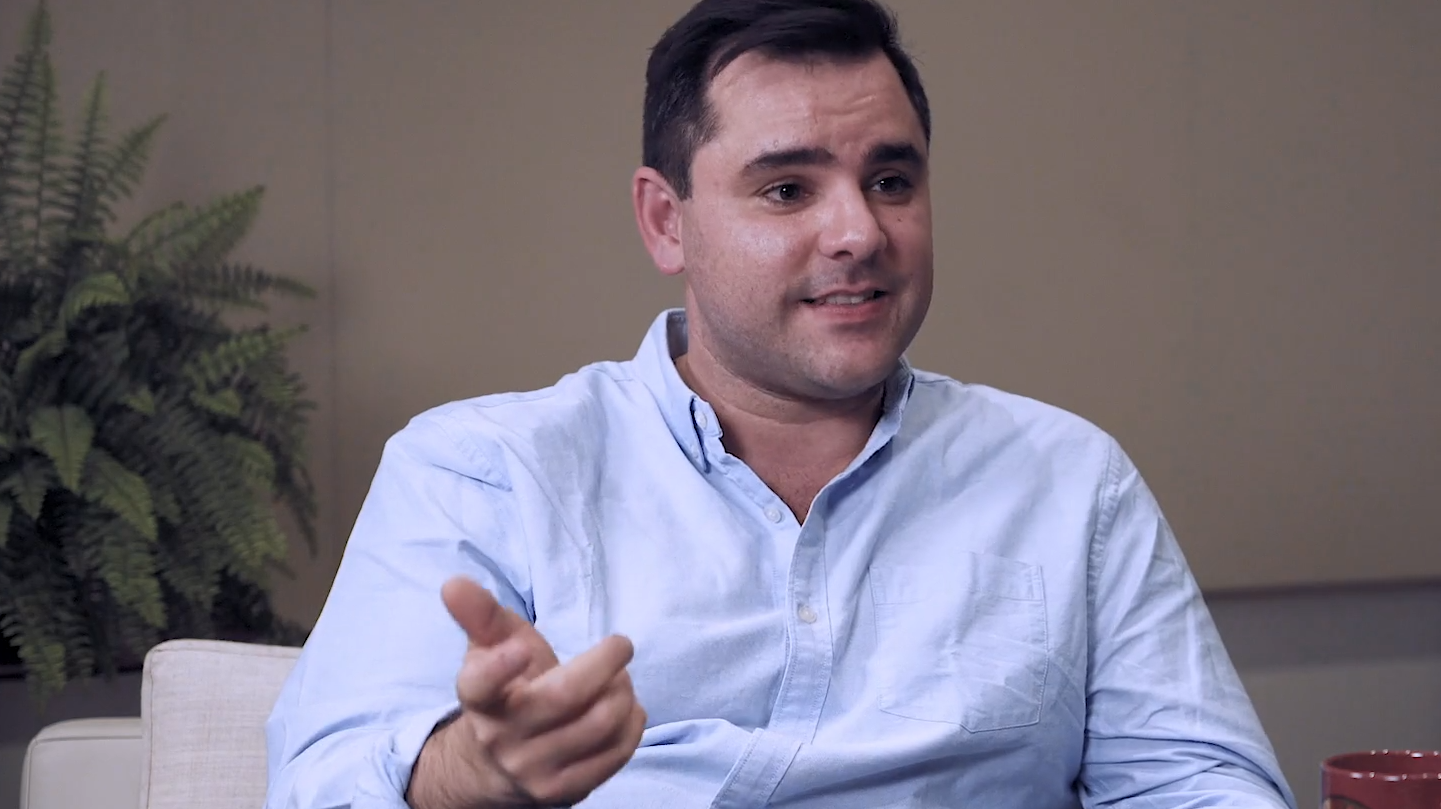Why You Should Focus on Mission & Communication as You Scale

Growing your team and product as your business scales rarely happens in simple a linear path. We sat down with Adam Enbar, serial entrepreneur and investor, who shared his experience about how having a well-defined mission helped him grow his startup from a small idea into the Flatiron School, a rapidly growing coding school that is disrupting higher education. Launched in 2012, the coding academy raised over $14 million and grew to over 300 employees within five years. It offers a robust coding education—both online and offline—to highly motivated individuals who want to build a career in technology and web application. In 2017, the unicorn WeWork acquired Flatiron, with the intent of furthering its mission. Throughout the journey, Enbar discovered the power of your startup’s mission as a clarifying, unifying, and motivating force that can help mitigate productively drops that occur as you scale.
Quick Tips for Scaling More Productively
- Narrowing Your Focus May Help You Scale More Productively. Putting your energy behind one thing moves the needle in a way that is just impossible if you lack clarity.
- Processes Break as You Scale. Processes tend to break each time startups triple in size. Frequent communication and having a strong company culture can help mitigate breakdowns and dips in productivity.
Mission Helps You Stay Focused
Most people associate scaling with continual expansion. But Enbar discovered that, as Flatiron scaled rapidly, he needed to narrow Flatiron’s focus. He did that by honing in on the venture’s initial mission—creating an alternative to higher education.
Enbar was working in venture capital, searching for a startup in the e-learning space. He wanted to support and develop alternative models for higher education. “I couldn’t find anybody doing anything interesting in education” he remembers. Then he met Avi Flombaum, a programmer. Flombaum taught students to code and helped them launch careers as developers—without obtaining computer science degrees. His approach and philosophy resonated with Enbar. “I’m passionate about education. And I met this guy who was teaching people and getting them jobs. It blew my mind. It solved so many problems.” The two co-founded Flatiron School together.
At the start, Flatiron School had one primary goal—“we knew we wanted to start a school that got people great jobs.” They intended to create a system that provided intensive hands-on coding experience for students. Instead of students amassing years of student debt, they envisioned graduates securing good-paying jobs in tech. d Initially, he recalls, “Flatiron had a 10% acceptance rate. It was really premium, really rigorous.”
As enrollment grew, the City of New York asked them if they could expand Flatiron’s product to attract a lower-income audience. Enbar shares, “that was totally not our brand, not our model.” But they developed a program, rationalizing that expand the market would be beneficial. The city-funded scholarships to Flatiron “expanded our universe.” Enbar recalls. “It expanded our potential market size and the impact we had.” It also enhanced their ability to recruit great talent.
As we grew that lack of focus and that willingness or desire to try new things became a real problem.
Adam Enbar
The Downside to Expansion
As Flatiron grew, they said “yes” frequently and pursued multiple directions. “We were willing to try a lot of different things,” he remembers. In 2016, they launched an online program. They ran their own campus programs and began experimenting with K-12 education. Their curriculum ranged from software engineering to mobile web development. Enbar reflects, “All of this was going on with a relatively small team, and we just weren’t doing anything particularly well. We had this notion that ‘this one big partnership could have this great impact.’ Or ‘let’s chase down this other idea.’”
Over time, he realized that “to really scale the company—not take it up to level three, but to really scale—it’s not about those big partnerships or those big glitzy things. It’s about focus.” He began to understand that “chasing the big whales”—what he assumed would lead Flatiron forward—was stagnating its growth.
To really scale the company—not just to take it up to level three, but to really scale—it’s not about those big partnerships or those big glitzy things. It’s about focus. It’s about the incremental month over month growth.
Adam Enbar
He confessed, “I like the big partnerships, I like the brand new things, the shiny objects.” So narrowing focus didn’t come naturally. But he realized, “that’s what it takes to go from starting a business that’s doing interesting things to doing something that actually has the potential to scale to millions of people.” The team used Flatiron’s mission to decide what to pursue. They shut down projects that were more tangential to their original mission, such as K-12 programming.
We put all of our focus on one thing. It completely changed our business. That’s what it takes to go from starting a business that’s doing interesting things to doing something that actually has the potential to scale to millions of people.
Adam Enbar
Some of the programs were cash flow positive, so deciding to end them was hard, especially at a time when the company had little money. But they decided, “we’re going to put all of our money, all of our focus on this one thing and we’re going to do it very, very well. It completely changed our business.”
How Mission Helps Mitigate Breakdowns in Communication and Processes
Processes and communication strategies that worked for you when you had a team of fewer than ten people won’t work as you scale. In his experience, the way a team functions can change, rather dramatically, in increments. When your startup is still young—less than ten people—the CEO’s role is to “relentlessly communicate the mission to your team so that they can connect to it.” When your venture grows quickly, “It’s really easy to lose connection. Everything breaks. You see how the machine breaks and then you have to fix it.”
When a company grows quickly everything breaks.
Adam Enbar
Assuming that the CEO has does a good job articulating the company’s mission, 90% of problems that startups experience are due to miscommunication, Enbar estimates. And, communication in a rapidly scaling organization is difficult. Regardless of your industry, Enbar discovered, “whatever you’re doing when your company has five employees, will not work when it has twenty. And that will not work when it has 80, and that will not work when it has 150.”
Whatever you’re doing when your company has five employees, will not work when it has twenty.
Adam Enbar
He shares, “I remember this surreal moment when Flatiron School had eight employees. A couple of them came up to me complaining that, ‘It feels like we don’t know what’s going on anymore’ which is great in the sense that they feel ownership.” So Enbar created the Flatiron Weekly Internal Newsletter (FWIN)—an email he sent every Sunday night—informing the team about decisions and things the company was doing. “I kept that going for five years,” he recalls, “Didn’t miss a Sunday.”
When the team grew to between 30 and 40—roughly tripling in size—employees approached Enbar again about wanting more communication. People saw FWIN as a channel for regular updates. But they wanted to find a way to gain input on partnerships or deals that they learned about after the fact. So he started a weekly round-up. “Every week we’d all get together, 40 of us for in-all-hands, and just talk about random stuff.” This method worked until Flatiron’s team reached between 80 and 100 people. At that point, staff felt the weekly all-hands no longer sufficed. The same pattern repeated when Flatiron grew to a team of 300 and with locations in ten states and around the globe.
The Rule of Three
Drawing on three decades of deep and broad perspective as a founder, CEO, and investor, Shikhar Ghosh validates that Enbar’s experience during scaling occurs commonly. He suggests that CEOs can anticipate when processes will begin to break by applying a framework he dubbed the “Rule of Three.” When a venture reaches between ten and thirty people, processes that worked when the company had less than ten employees become strained and begin to break. And temporarily, your startup experiences a dip in productivity.
The same dip occurs again when your venture grows to over forty people. Ghosh explains that the pattern of straining and breaking repeats as a company scales its number of employees in multiples of three. He elaborates, “at three, at nine, at 27, at 81, at 270, everything breaks. Just roughly, in multiples of three, the structure of things change, and you can’t do the same things” anymore. Anticipating breakages at those points of growth is part of the CEO’s role. Expecting that you’ll need to create new processes at every tripling can help mitigate the loss of productivity that occurs at those points. And you can make changes more manageable for your team by reinforcing your company’s mission.
Importance of Culture as You Scale
As Flatiron expanded to locations around the globe, clear and frequent communication became critical. And the leadership team welcomed input. “What’s really important is creating a culture where people can assume the best. And part of that is enforcing culture where you encourage open communication.”
Sometimes, he acknowledges, leadership makes decisions that may not look like the right decision to someone who doesn’t have all of the information.
For instance, the executive team could lock themselves “in a room and analyze every cost and benefit of structuring the team this way and building the commission that way. And even if we do come to the ideal decision, we will not have communicated every trade-off we made.” And he reflects, working in isolation, they might not reach the optimal decision. “Because there is no best decision. There’s trial and error” he notes.
So Flatiron endeavors to keep communication transparent and open. From his perspective, “we hired a bunch of really great people that are really smart, let’s, uh, let’s tell them, ” Look here’s what’s breaking.” He stresses, “It’s not a democracy. We’re not necessarily going to vote here. We have to think about all the trade-offs. But it helps us build the system that’s going to incentivize things properly.” And, in his experience, “People tend to rise to the occasion.”
If you can involve people in shaping the company, they’re more forgiving of the mistakes because they understand the complexity of the issues that you’re confronting. They understand why this is hard.
Adam Enbar
Interested in learning more about how a strong company culture can help during periods of rapid scaling? Learn how culture helped Careem’s CEO scale a startup into a unicorn. Looking for other tips on scaling? And why focusing more on people and investing in human capital can help. Serial founders and CEOs like share their experience with various aspects of scaling and offer tips on how to manage in our How to Scale section.

